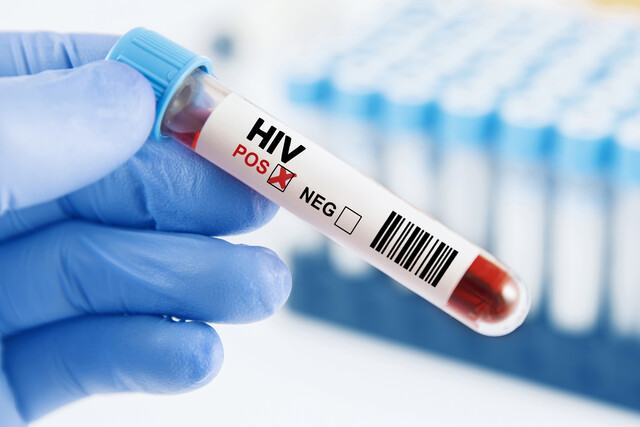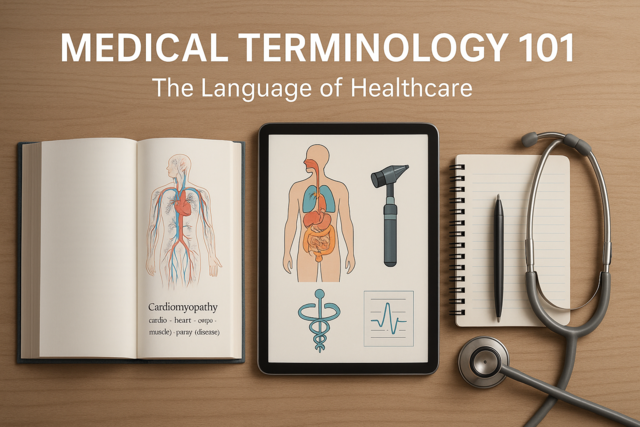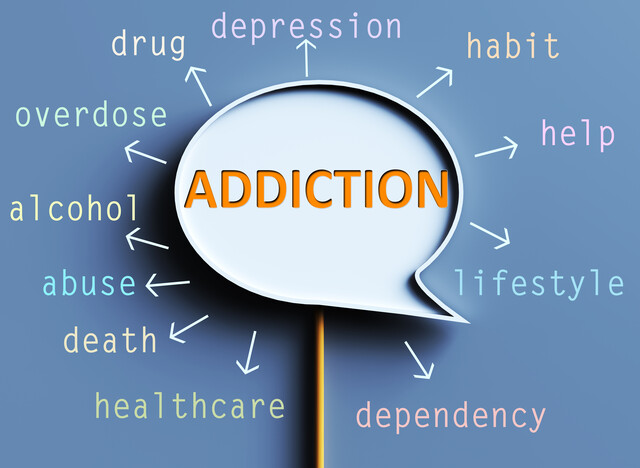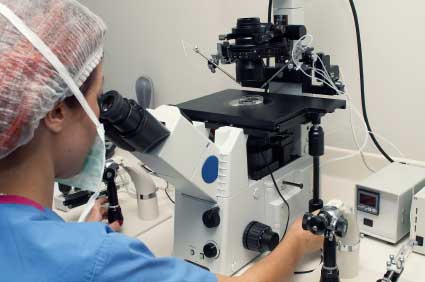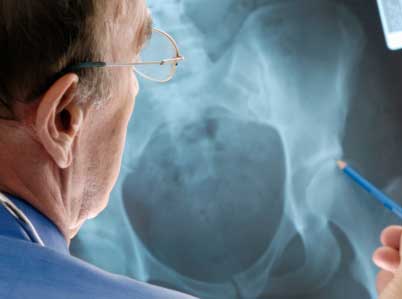Introduction
The elderly are prone to a number of medical conditions and disease, including diabetes. While many seniors today remain as active as possible, the importance of exercise, skin care, and awareness of symptoms of diabetes as well as its complications for the elderly should be understood by not only the seniors, but also family members and caregivers. The importance of care and the dangers of infection to the elderly are broached in this article.
Importance of Care
Skin care is especially important for anyone diagnosed with diabetes. The condition increases the risk of damage to small blood vessels and nerves found in the skin, which may not only affect skin care, but the health and ability of the skin to protect the body from injury and infection.
It's important for seniors as well as others to keep their skin well hydrated because simple cuts, scratches, cracks and fissures may be very slow to heal and lead to infection that can travel to other parts of the body. The same goes for dry skin. If a senior diabetic continually scratches the same spot of skin, open sores may form, offering easy access for bacteria and other infections that may gradually worsen. Diabetic skin wounds and infections in the elderly are extremely difficult to treat. In some severe cases, serious infection and gangrene can set in, requiring amputation.
Bacterial infections such as staph or strep often occur in areas where cellulitis or boils are present, and fungal infections can occur in between the toes on the feet, in moist and warm areas of the body including underneath the breasts, in the groin, and between the buttocks.
A large number of skin infections develop in not only seniors, but also all individuals diagnosed with diabetes, too many to mention here. Talk to your doctor or health care provider about the importance of taking care of the skin and properly bathing and drying the skin.
Dangers of Infection
One of the most important issues for diabetics to remember is that erratic or high levels of blood glucose can eventually clog up blood vessels, damage or deaden nerves, and lead to mild to severe conditions of neuropathies or vascular disease. An individual with nerve damage to the feet may not notice it if she steps on something sharp, bruises or otherwise damages the skin. Some elderly individuals find it difficult to take care of their feet and often neglect them to the point that the soles of the feet become dry and cracked.
Even something as small as a blister may turn into a serious injury or wound for a person with Type One or Type Two diabetes. Corns and calluses should not be removed with chemicals or cutting implements by yourself. Ask your doctor before using a pumice stone. Toenails and hangnails should not be trimmed by yourself either, increasing the risk of injury or damage. Believe it or not, something a small as a popped blister or an improperly trimmed toenail can lead to serious infections that may endanger the health not only of the toe, but of the foot.
Foot Care for Diabetics
A number of tips may help diabetics take better care of their feet and reduce their chance of injury or infection.
- Daily foot checks - every day, check your feet for signs of bruising, skin tears, redness, or blisters. If you can't do it yourself, have someone else do it for you. Don't forget to check in between toes!
- Carefully watch any blisters or wounds for signs of slow healing or infection. If the wound, deep bruise or cut has not healed within a couple of days, contact your doctor. Don't let it go. Signs of infection include swelling and redness around the cut.
- Soak your feet in a footbath of lukewarm water before going to bed every night. Make sure that your feet are completely dried before placing socks or slippers on your feet. Don't soak your feet if you have any kind of an open wound or decubitus ulcer.
- After bathing and your feet are dry, carefully and softly moisturize the skin of the heels, the balls of the feet, and the toes. Avoid placing lotion in between the toes, as doing so can contribute to infections or fungus growth.
- Some like to sprinkle a light amount of baby powder on their feet following a bath (but only after the feet are completely dry).
- Corns, calluses, and difficult toenails should be taken care of by a professional podiatrist. In order to prevent ingrown toenails, toenails should be cut straight across and not rounded. Avoid cutting toenails too close to the skin line. Sharp edges and corners can be gently sanded with an emery board.
- Especially thick toenails that are discolored should be checked out by your doctor or podiatrist, as they're common signs of fungal infection.
Foot Ulcers
Those who have been diagnosed with diabetes should talk to their doctor if any sign of a foot ulcer is noticed. In many cases, a diabetic foot ulcer will develop over areas of high pressure points of impact or under a callus. The back of the heel is a common area for sores and ulcers, as many seniors lay in bed with their heels against the mattress or sheet, gradually increasing redness and irritation caused by friction. Poor circulation in the feet and legs also contributes to the preponderance of foot ulcers in elderly diabetics.
The seriousness of foot ulcers cannot be overemphasized. Poor circulation, slow healing processes, and ever-growing infections can threaten the life not only of the foot, but sometimes the lower leg as well. That's why it's so important to check the feet, the heels, and the ankles for signs of any injury on a daily basis.
Proper wound care is important in elderly diabetics. The wound itself should be covered with a loose and breathable dressing and the area should remain moist. A flow of oxygen should be able to reach the wound, which will help in the healing process.
A doctor may prescribe an antibiotic ointment in the event infection is present, and may prescribe oral medications. Resist the urge to self-treat foot ulcers on your own. Certain types of foot ulcers, including pressure ulcers, may require the removal of dead skin, known as debridement, which can be performed at the podiatrist's office or by nurses or doctors specially trained in wound care.
If left untreated, tissue death called necrosis may eventually occur. Damaged areas of the feet may spread infection to other areas of the lower leg, calf and even the thigh. Tissue death is evident by the presence of blackened skin around the wound. In some cases, gangrene may set in, as can bone infection called osteomyelitis, if the infection in the wound travels deeper than skin level.
Skincare for the Elderly
Bedsores are extremely common in the elderly, and the risks for bedsores increase if those elderly individuals are diagnosed with diabetes. Chair-bound or bedridden individuals should be turned or readjusted periodically (every 2 to 3 hours) to help prevent bedsores, also known as decubitus ulcers. Cushion bony joints, areas and the buttocks by placing special foam, eggshell-type foam cushions or pillows beneath pressure points.
Encourage the elderly person to get up and walk every once in a while. Encourage the elderly individual to jiggle the legs, rotate their arms, and wiggle their toes and fingers on an hourly basis. Whenever possible, encourage the individual to participate in passive range of motion exercises if they can't exercise for themselves.
Elderly diabetics can be made more comfortable in bed and prevent additional pressure against bony areas by placing a sheepskin pad underneath their bed sheet. Individuals can also wear elbow protectors to help cushion and protect those joints. The skin of elderly individuals is especially prone to bruising and tearing. Never rub the skin, but instead gently pat lotions or dry the skin using a soft cloth.
Gestational DiabetesConclusion
We've covered the basics regarding the importance of skin care and preventing injury or infection in the elderly diabetic. As you can see, the importance of foot care is important for anyone diagnosed with diabetes, foot care is even more important for those entering their senior years.
While seniors need to be especially careful regarding skin and foot care in their later years, pregnant women also need to pay special attention to their bodies in the event that they are diagnosed with gestational diabetes.
Introduction
Gestational diabetes is also known as GDM. This type of diabetes may develop in some women during pregnancy. According to scientific studies, nearly 7% of pregnant women may develop gestational diabetes. In some cases, these individuals have 50% increased likelihood of developing Type Two diabetes following the pregnancy or later on in life. This article focuses specifically on what causes gestational diabetes, how women can take care of themselves throughout their pregnancy, and learn healthy lifestyle habits that will help them and their babies experience a healthy and normal pregnancy and delivery.
Healthy Habits for Moms
Gestational diabetes is caused by an insulin resistance to those predisposed to such a diabetic condition. During pregnancy, the placenta creates hormones such as cortisol and estrogen, as well as other hormones that help baby develop and grow. These hormones, if levels get too high, counteract the effects of insulin. When the body doesn't receive enough insulin, the blood glucose levels rise. While this is normal for just about every pregnancy, in some cases, the condition causes more than a mild resistance, and cause erratic and unmanageable blood glucose levels.
High levels of blood sugar in the blood can provoke dangers to both the pregnant mother and developing baby. Damage to the kidneys, nervous system and cardiovascular systems are possible. Extremely high blood glucose levels can increase the risk of fetal death during the last 2 to 3 months of pregnancy, and may cause other risks in development as well as complicated deliveries.
New moms should carefully discuss their family history and understand the risks associated with gestational diabetes. Women who are most at risk include:
- Those who are overweight or have a BMI (body mass index) over 25
- Women over 25 years of age
- Women who have a history of glucose tolerance impairment or gestational diabetes
- Individuals who belong to high-risk ethnic groups which may include African Americans, Asian Americans, and Hispanics.
Women diagnosed with gestational diabetes may need to make some lifestyle changes, which include exercising and following a carefully prescribed diet. An obstetrician and perhaps a nutritional dietitian will carefully instruct pregnant women in the importance of counting carbohydrates, the importance of portioning, and making smart choices regarding calories and nutrients.
Pregnant women may be relieved to know that some are able to control their gestational diabetes through exercise and diet. Walking is one of the best forms of low-impact, gentle exercise that offers benefits to pregnant women. Pregnant women diagnosed with gestational diabetes are encouraged to talk to their doctor or health care provider regarding adequate types of exercise, frequency, and duration.
-
Importance of Obstetrical Care
Routine obstetrical care can help identify and monitor gestational diabetes through routine and regular obstetrical checkups. High levels of glucose are often seen in the urine, in which cases the obstetrician may request a plasma glucose test.
The doctor may also order an oral glucose tolerance test (known as an OGTT) that involves drinking a predetermined amount of Glucola, a sweet and sugary form of glucose, to determine your tolerance to it. After ingestion, the doctor will test your blood glucose levels at predetermined points in time following the test, most commonly every hour for 3 hours after drinking the Glucola.
Obstetricians may recommend that obese women restrict their carbohydrate intake to no more than 40% of their total daily calorie intake. Doing so may reduce risk of hyperglycemia. Also throughout the pregnancy process, obstetricians will carefully gauge overall health and wellness and if necessary, suggest insulin therapy. Pregnant women will also be relieved to know that insulin is not able to penetrate the placenta, and will cause no harm for the pregnant mother or her baby.
Babies born to mothers who have been diagnosed with Type One or Type Two diabetes, or mothers diagnosed with gestational diabetes may be born with hypoglycemia. Other complications may include low levels of vital minerals such as magnesium and calcium. GDM babies may also be born with jaundice due to excess bilirubin in the system. All these conditions are easily treatable and will be dealt with quickly and effectively.
-
Post-Delivery and Breastfeeding
After baby's birth, it's important for mothers to continue to monitor their condition as well as the condition of their infants. It's especially important to make and keep postpartum checkups and evaluations, where blood glucose levels will continue to be tested. In most cases, when glucoses levels return to normal after delivery, young mothers may require glucose testing every three years. If the obstetrician believes the mother may still be in a pre-diabetic or diabetic condition, blood glucose levels will need to be tested annually.
As an aside, all new mothers should make sure that their primary health care provider or family doctor receives copies of the mother's medical records from the obstetrician or gynecologist during the pregnancy, and be made aware if the mother has been diagnosed with any type of insulin resistance or hyperglycemia.
Breastfeeding is perfectly fine for babies, and will help reduce the risk of the new mother from developing Type Two diabetes. This is because breast-feeding stimulates and activates the pancreas to increase and maintain beta cell function.
Conclusion
While new mothers should continue to monitor their own condition as well as that of their infants, healthy lifestyles may reduce the risk of contracting gestational diabetes prior to becoming pregnant. Watch the diet, exercise regularly and take care of yourself, and you may drastically reduce your chances of developing gestational diabetes or other forms of diabetes in your non-pregnant state.


